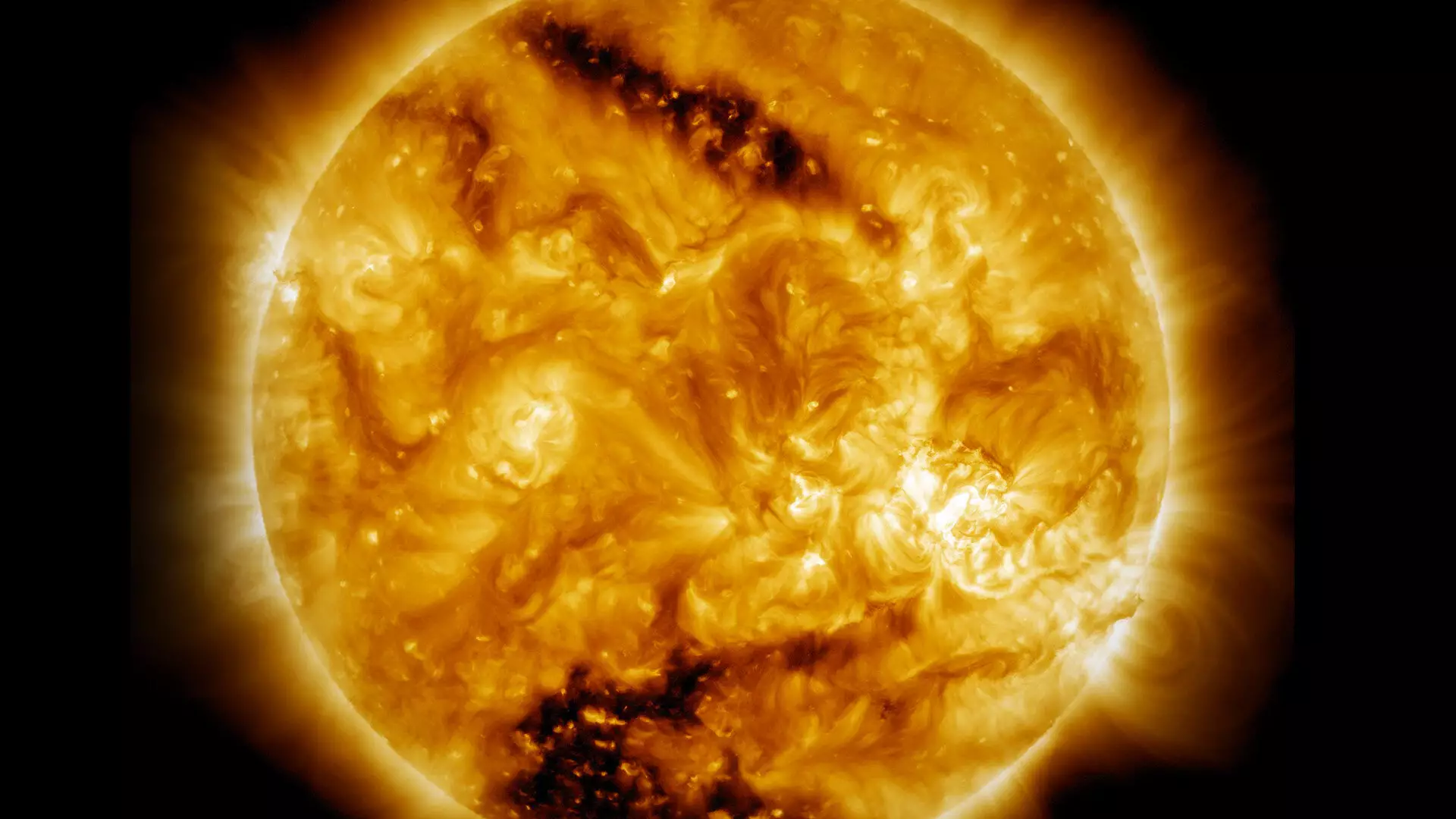The sun, a colossal ball of hydrogen and helium, is central not only to our solar system’s mechanics but also to the mysteries of astrophysics. One particularly baffling feature of our sun is its temperature gradient: while its surface temperature hovers around 10,000 degrees Fahrenheit, the solar corona—the outer atmosphere—soars to a staggering 2 million degrees Fahrenheit. This phenomenon raises a tantalizing enigma, as one would typically expect temperatures to diminish with distance from a heat source. This puzzling increase in temperature has been an astrophysical conundrum since the late 1930s. Even with decades of research, scientists struggled to grasp the mechanisms facilitating this unsettling reality. Recent work from a team at the U.S. Department of Energy’s Princeton Plasma Physics Laboratory, led by Sayak Bose, is shedding light on this age-old mystery, focusing on the potential role of reflected plasma waves.
At the core of this research lies the concept of Alfvén waves, named after Swedish physicist Hannes Alfvén, who first theorized their existence. These waves can be thought of as oscillations induced in plasma, somewhat reminiscent of the vibrations of a guitar string; however, they arise from the perturbations in magnetic fields within the plasma. The new findings indicate that these Alfvén waves might be reflected under conditions akin to those found in coronal holes—regions with open magnetic field lines that permit the solar wind to escape into the cosmos. This reflection and the resulting interactions may explain the bizarre rise in temperature within the solar corona.
The team utilized the Large Plasma Device at UCLA, a sophisticated experimental apparatus designed to simulate the conditions of space physics to study how Alfvén waves behave in a controlled environment. They systematically explored how variations in plasma density and magnetic field intensity might affect the propagation of these waves. Their results unveiled a significant conclusion: when Alfvén waves encounter differences in these parameters, they don’t just dissipate; instead, they reflect back towards their source, creating turbulence in the process. This turbulence is proposed to be a key mechanism in heating the surrounding plasma, ultimately contributing to the higher temperatures observed in the corona.
What sets this research apart is its experimental basis. As noted by Jason TenBarge, a collaborator involved in the study, while scientists have theorized about Alfvén wave reflection for a long time, empirical verification was elusive—until now. The successful lab experiment represented a pivotal moment; it not only validated existing hypotheses but also provided concrete evidence that the energy reflected from these waves is substantial enough to influence the thermal dynamics of coronal holes.
In conjunction with the laboratory work, the researchers conducted computer simulations that further confirmed their findings. By integrating experimental data with theoretical models, the team fortifies the reliability of their conclusions. Indeed, the alliance between hands-on experiments and computational analyses reveals the multifaceted nature of scientific inquiry and its capacity to unravel the complexities of natural phenomena.
This groundbreaking study is more than just an academic milestone; it represents a leap towards deciphering the complexities of our sun. By linking abstract plasma physics to observable phenomena within the solar atmosphere, the research enhances our grasp of solar activity.
Moreover, the importance of this research extends beyond mere curiosity about solar mechanics. Understanding the processes that drive the dynamics of the solar corona can have significant implications for space weather forecasting, satellite operations, and even the safety of astronauts. The sun’s unpredictable behavior, often linked with solar flares and coronal mass ejections, poses risks that ripple throughout the solar system, reminding us of the delicate balance between our terrestrial existence and the celestial forces at play.
This research exemplifies the power of collaboration in science, involving contributions from various esteemed institutions, including Princeton University and Columbia University. Such interdisciplinary partnerships are essential to tackling the profound queries that challenge our understanding of the universe. With astronomers and physicists working hand-in-hand, the frontiers of solar science are steadily advancing, promising to unveil the secrets held by our sun for centuries.
The journey to comprehend the solar corona’s anomalous temperatures continues, yet significant progress has been made. Thanks to the pioneering work of researchers like Sayak Bose and his team, the dialogue between laboratory experiments and cosmic observations enriches our quest to understand the myriad mysteries of the cosmos.


Leave a Reply